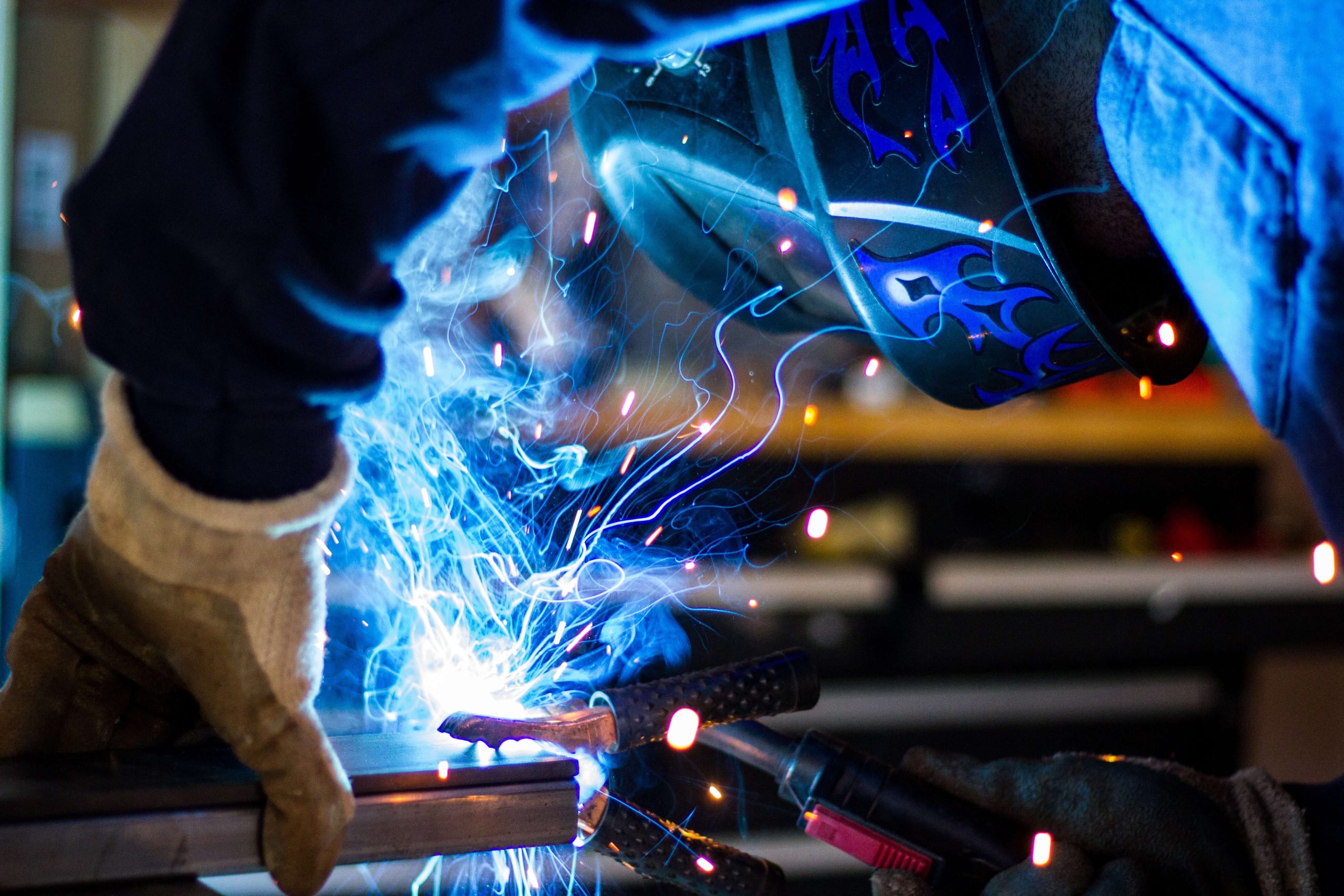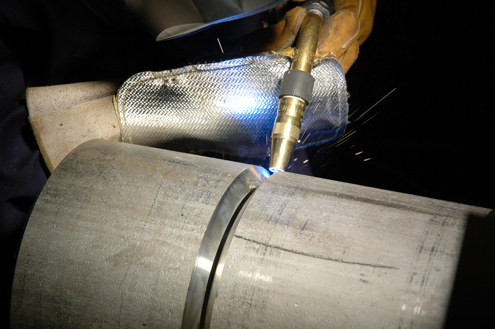Expert welding repair tips from Belgrade Welding professionals
Wiki Article
Common Welding Repair Issues and Exactly How to Address Them Efficiently
Welding repairs often come across a variety of problems that can endanger the honesty of the end product. Common issues consist of inadequate infiltration, porosity, and imbalance, among others. Each issue provides distinct challenges that require particular strategies for resolution. Comprehending these issues is vital for welders aiming to boost their end results and skills. This discussion will certainly check out these typical welding repair service problems and efficient methods to resolve them.Insufficient Infiltration
Poor penetration occurs when the weld steel fails to totally fuse with the base product, leading to weak joints and prospective structural failings. This problem often stems from inadequate heat input, wrong electrode angle, or improper welding rate. Welders might run into inadequate infiltration as a result of a miscalculation of the necessary specifications for a details material thickness or type. Additionally, contamination on the base product's surface can impede effective bonding, worsening the trouble. To attend to insufficient infiltration, welders must assure ideal settings on their tools and maintain a clean job surface area. Regular assessment of welds is recommended to recognize any type of shortages early, enabling for prompt modifications and the avoidance of jeopardized structural honesty in welded assemblies.Porosity
Porosity is a common defect in welded joints that materializes as tiny gas bubbles trapped within the weld steel. This issue can compromise the integrity of the weld, bring about minimized stamina and possible failure under tension. Belgrade. Porosity usually develops from contamination, wetness, or inappropriate welding strategies, which enable gases to leave right into the liquified weld swimming pool. To deal with porosity, welders ought to guarantee appropriate surface area prep work, preserve a tidy workplace, and use suitable welding parameters. Additionally, selecting the appropriate filler product and protecting gas can reduce gas entrapment. Regular examination and screening of welds can aid identify porosity early, ensuring prompt corrective activities are taken, consequently preserving the high quality and reliability of the welded structureImbalance
Misalignment in welding can emerge from different elements, consisting of improper configuration and thermal development. Understanding the origin is vital for effective resolution. Several improvement methods are offered to realign components and ensure structural stability.Root causes of Misalignment
Welding imbalance commonly comes from a selection of underlying concerns that can endanger structural stability. One key cause is improper fit-up of components before welding, which can cause gaps and unequal surface areas. Variations in thermal expansion throughout the welding procedure can also lead to distortion, particularly if the products being joined have various coefficients of growth. Additionally, inadequate clamping and fixturing may fail to hold elements securely in position, causing motion during welding. Poorly conserved devices, including welding equipments and devices, might introduce incongruities in the weld bead, further adding to imbalance. Ultimately, operator error, originating from inadequate training or experience, can also play a considerable function in producing misaligned welds.Adjustment Techniques Readily Available
Addressing misalignment effectively needs a combination of restorative methods tailored to the details issues handy. One usual method is the use of jigs or fixtures to hold elements in the appropriate setting during welding, making sure constant alignment. Additionally, pre-heating the products can help in reducing distortion and boost fit-up. For considerable imbalance, mechanical adjustment techniques, such as using hydraulic jacks or clamps, can be employed to remedy the setting before welding. Post-weld warmth treatment might additionally be needed to relieve anxieties triggered by imbalance. Ultimately, mindful inspection and modification throughout the configuration stage can prevent misalignment concerns from becoming substantial troubles, promoting a smoother welding process and enhancing general architectural integrity.Distortion
Distortion is a typical obstacle in welding that can occur from numerous elements, consisting of irregular heating & cooling. Recognizing the root causes of distortion is vital for implementing effective avoidance strategies. Resolving this issue not just boosts architectural stability yet additionally improves the overall high quality of the weld.Reasons for Distortion
When based on the extreme warm of welding, materials often undergo adjustments that can bring about distortion. This sensation primarily develops from thermal growth and contraction throughout the welding process. As the weld area warms up, the material increases; upon air conditioning, it contracts, which can create internal tensions. Furthermore, irregular heating throughout a workpiece can exacerbate these stresses, causing bending or flexing. The type of material additionally plays a significant function; steels with differing thermal conductivity and coefficients of growth might respond in a different way, causing unpredictable distortions. Poor joint design and poor fixturing can add to imbalance throughout welding, increasing the likelihood of distortion. Comprehending these reasons is essential for reliable welding repair work and avoidance strategies.Prevention Techniques
Efficient avoidance methods for distortion during welding emphasis on regulating heat input and making certain appropriate joint style. Keeping a consistent warmth input assists to decrease thermal expansion and tightening, which can cause distortion. Using methods such as pre-heating the work surface can likewise minimize the temperature gradient, advertising uniform heating. Furthermore, picking appropriate joint designs, such as T-joints or lap joints, can enhance security and reduce stress concentrations. Applying proper fixturing to secure the workpieces in location even more aids in preserving placement during the welding process. Finally, staggered welding sequences can distribute heat a lot more equally, avoiding local distortion. By applying these techniques, welders can substantially reduce the chance of distortion and enhance the overall high quality of their welds.Cracking
Splitting is a common concern come across in welding repair services, typically resulting from numerous aspects such as improper air conditioning prices, material option, or insufficient joint prep work. The incident of cracks can considerably endanger the stability of the weld, causing possible failures during operation. To address this problem, welders must first evaluate the source, guaranteeing that products are suitable and appropriately chosen for the specific application. Additionally, regulating the air conditioning rate during the welding procedure is essential; rapid air conditioning can generate tension and cause fracturing. Proper joint style and prep work additionally contribute to decreasing the danger. Executing these approaches can improve weld quality and toughness, eventually reducing the chance of cracking in completed weldments.
Insufficient Blend
A substantial issue in welding repair work is insufficient blend, which takes place when the weld metal does not appropriately bond with the base material or previous weld passes - Montana Mobile Welding and Repair. This defect can bring about weaknesses in the joint, potentially endangering the honesty of the welded structure. Elements adding to insufficient combination consist of inadequate warm input, incorrect welding strategy, and contamination of the surface areas being signed up with. To resolve this problem effectively, welders ought to guarantee proper pre-weld cleaning and surface area preparation, along with readjust their welding parameters to attain appropriate penetration and blend. Regular examination throughout the welding process can likewise aid identify insufficient fusion early, allowing for prompt corrective procedures to boost the total quality of the weldOverheating
While welding fixings can improve structural stability, overheating presents a substantial obstacle that can lead to material degradation. Extreme warm during welding can modify the mechanical residential properties of metals, causing lowered toughness, raised brittleness, and bending. This sensation is particularly critical in high-stress applications where structural integrity is critical. Recognizing getting too hot can involve visual inspections for discoloration or distortion, in addition to keeping track of temperature throughout the welding procedure. To reduce the threats related to getting too hot, welders need to employ ideal techniques, such as managing warmth input, changing traveling rate, and utilizing ideal filler materials. Furthermore, applying pre- and post-weld warm treatments can aid bring back material properties and improve the overall quality of the repair work, guaranteeing lasting efficiency and safety and read more security.Often Asked Concerns
What Are the Typical Indications of a Welding Flaw?

How Can I Check My Welds for Quality?
To test welds for top quality, one can make use of aesthetic inspections, ultrasonic testing, and radiographic approaches. Each method guarantees structural integrity, identifies flaws, and confirms adherence to specified standards, inevitably improving the reliability of the welded joints.What Safety Precautions Should I Take While Welding?
When welding, one should prioritize security by wearing appropriate personal protective tools, ensuring correct ventilation, securing combustible materials away, keeping a tidy office, and being aware of environments to stop crashes and injuries.Can I Fix a Weld Without Redesigning the Entire Joint?
Repairing a weld without remodeling the entire joint is possible, relying on the damages (Montana Mobile Welding and Repair Welding). Strategies such as grinding, adding filler product, or utilizing a welding procedure can efficiently resolve specific flaws while preserving the bordering structureWhat Devices Are Important for Reliable Welding Services?
Vital devices for reliable welding repair services include a welding device, cord brush, mill, protective gear, clamps, and filler products. Each device plays an important function in making sure quality and security during the repair work procedure. Porosity usually emerges from contamination, moisture, or inappropriate welding methods, which permit gases to leave right into the molten weld pool. Badly kept tools, including welding devices and tools, might present incongruities in the weld bead, further adding to misalignment. When subjected to the extreme warm of welding, products commonly undergo modifications that can lead to distortion. Breaking is a common problem experienced in welding repair work, often resulting from various variables such as inappropriate cooling prices, material choice, or poor joint preparation. A substantial issue in welding repair services is incomplete combination, which happens when the weld metal does not adequately bond with the base product or previous weld passes.Report this wiki page